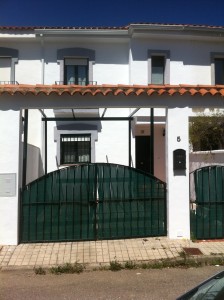
Along the 2015 positive expectations indicated the beginning of a new cycle in the real estate sector. Good macroeconomic data, the increase in the number of sale and purchase, the return of the financing and the increase of foreign investment predicted an exercise with the upward trend in prices.
After so many years of crisis, all wanting positive news of recovery but I did not expect is that they produced such imbalance between supply and demand. On the one hand, positive news of recovery have cooled to the owners at the idea that prices are rising; and on the other, buyers have encouraged in the heat of the prospect of buying very cheap with prices still low. This singular misalignment between supply and demand, coupled with the current political situation, It may cause a drop of operations in the last quarter of the year, so an exhaustive analysis of the situation is essential to be able to answer the question: What are they doing in real estate prices: up or down? If we take as an example Madrid, We note that the average price in the capital in 2015 It has been of 2,802€ / m2 vs 2.846€ / m2 of the year 2014, which means a reduction of the 2%. But also remember that the average price in 2007 was 4.301€ / m2.
If we lower our analysis at the district level, we see that more modest areas are suffering still sharp declines (for example, Vallecas recorded a fall of the 35% in 2015 respect to 2014). On the other hand, the premium areas have already entered stabilization with slight increases. In the Salamanca district, for example, the average housing price in 2015 It has stabilized in 4.293€ / m2 (front 4.257€ / m2 of 2014), which means a 2% increase, While in the Chamartín district has placed on 3,734€ / m2 vs the 3,767€ / m2 of the last year, a 1% less.
The recovery is not linked with a rise in prices. While indicators that predicted the recovery will have more than fulfilled, its influence on housing prices was not expected:
The first factor which anticipated a rise in prices was the increase in purchase and sale operations - up to a 17% more by 2015-. However, the type of existing demand in 2015 It has prevented this increase. Much of the demand comes from buyers who have been waiting the prices touch bottom and investors of bag in search of better investment returns. This type of claim has two main features: you are looking for very low prices and disappears over time.
1. The second factor that predicted rise in prices was increasing the flow of credit at low interest rates. This is undoubtedly one of the major levers of recovery. However, banking is being much more cautious in their appraisals and in their assessments of risks for which only are closing operations adjusted in price. Additionally, the constant expectation of rising rates that we have lived along in 2015 It has not encouraged the buyer to bid upward.
2. At last, and with reference to the increase in inflows of foreign capital, during 2015 the inverter has focused mainly on soil, Hotels and buildings to rehabilitate, so their influence on the price of housing has not been decisive.
3. All this is coupled with the existence of a large stock of existing housing from banking to, with great discounts, they keep prices lower-middle in areas non-premium. We can do an analysis of the real estate sector not to mention the growing increase of employment in real estate brokerage. The real estate agent is the most responsible for maintaining supply and demand properly advised: transparency, training, professionalism and quality in the advice are essential requirements for sustainable growth in this key sector in the Spanish GDP. It is important to combat this storm as soon as possible. Leaving aside the effects of the post-election political scenario you might have in the sector, in 2016 the recovery should be consolidated with an improvement in the quality of supply and demand. The new work should supplement the lack of product in exclusive areas, While on the demand side the opportunistic buyer should make way for buyers of value. But above all, is vital that supply and demand have adequate information.
Paloma Pérez Bravo She is general director of MMC from Engel & Volkers in Madrid
Read more:
http://www.cincodias.com/cincodias/2016/01/14/empresas/1452799662_724997.html